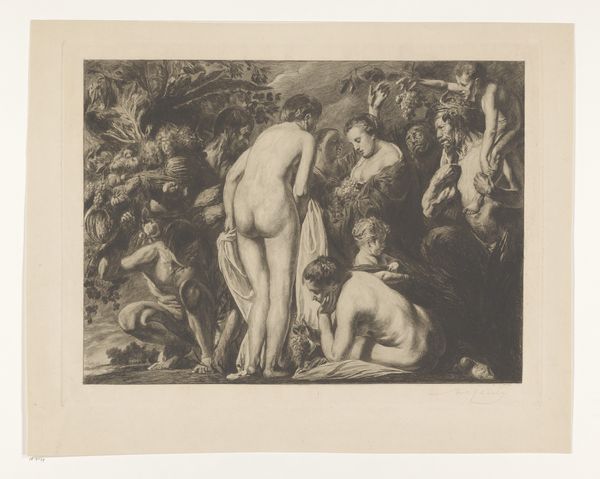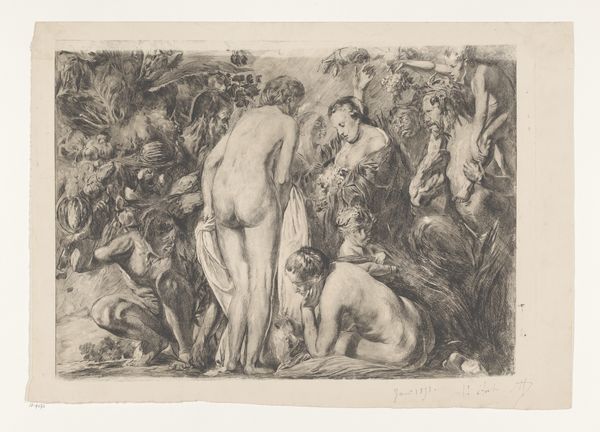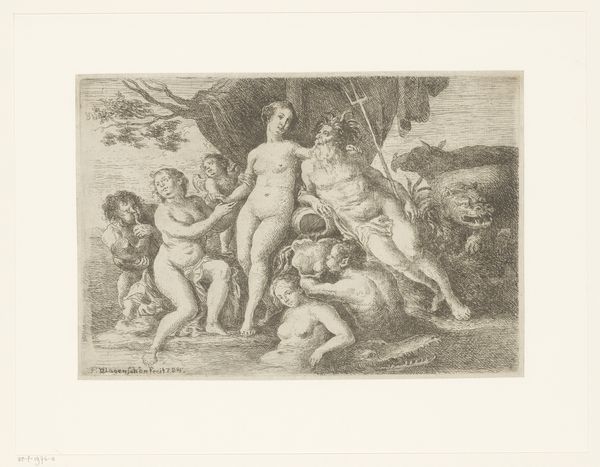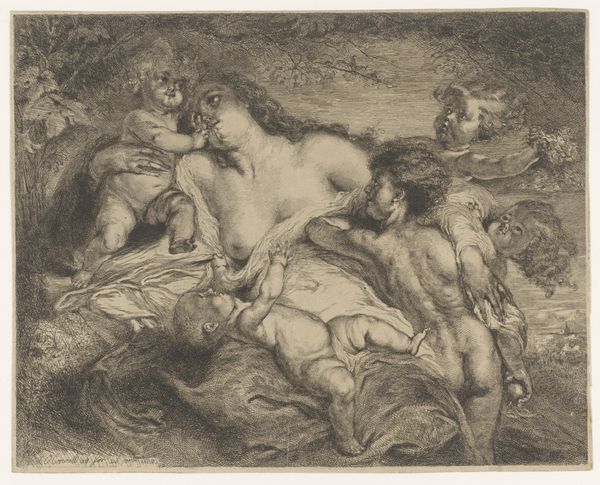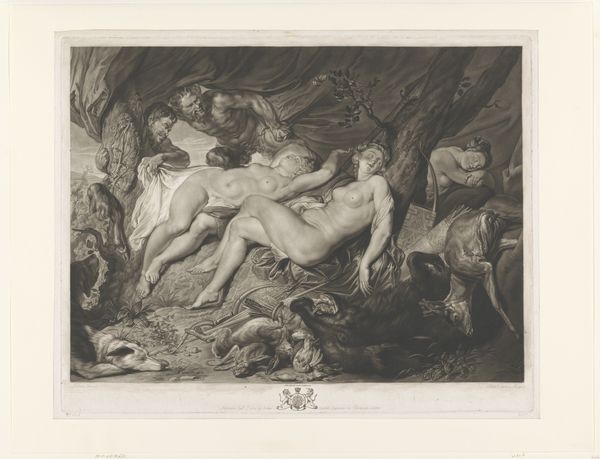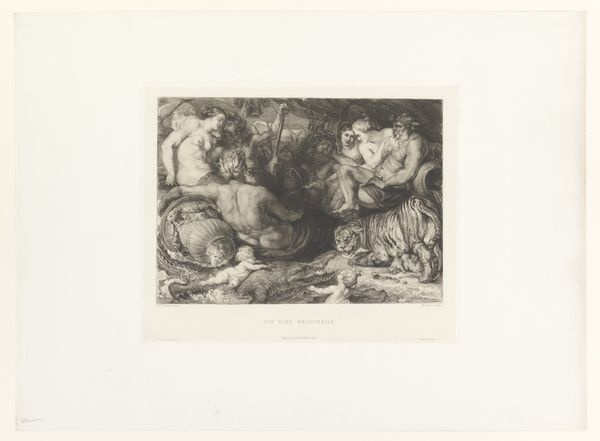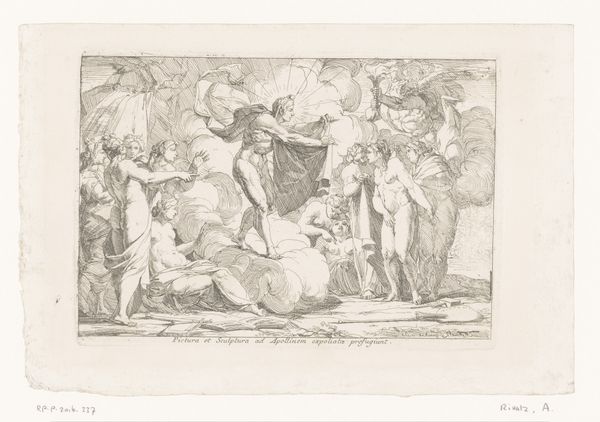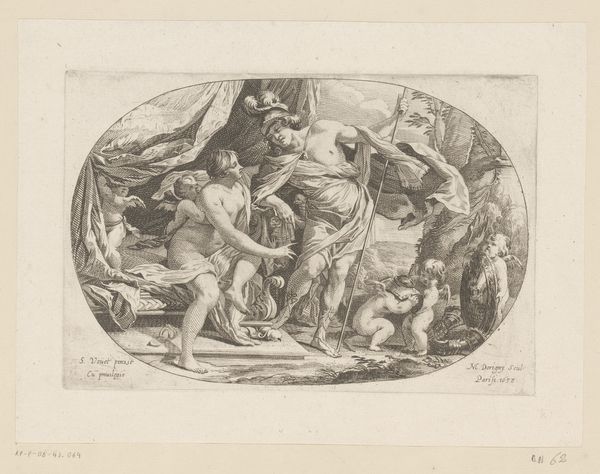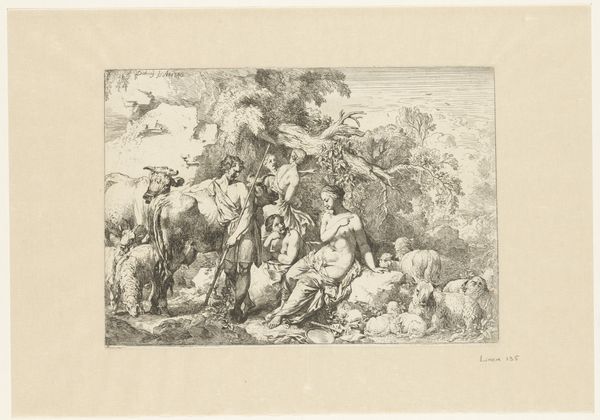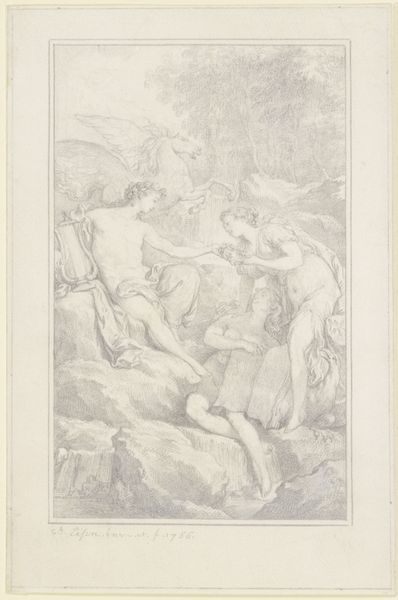
print, engraving
# print
#
charcoal drawing
#
figuration
#
genre-painting
#
history-painting
#
nude
#
engraving
Dimensions: height 494 mm, width 597 mm
Copyright: Rijks Museum: Open Domain
Armand Heins created this etching, “Bacchanal,” during a time when artists were revisiting classical themes through a modern lens. Heins, working in the late 19th and early 20th centuries, taps into the traditional representation of bacchanals, or Roman festivals of Bacchus, the god of wine and ecstasy. Here, Heins populates his composition with figures indulging in revelry. What is striking is how the female nude becomes a central focus, embodying both the sensuality and abandon associated with these feasts. The artist skillfully plays with light and shadow, creating a sense of depth and movement that draws the viewer into the scene. Yet, beyond the veneer of classical allusion, there is also the undeniable male gaze, a common trope in art history. The artwork prompts us to consider the complex interplay between celebration, objectification, and the historical construction of gender. How does this lens shape our understanding of pleasure and freedom within the broader social contexts of the time?
Comments
No comments
Be the first to comment and join the conversation on the ultimate creative platform.
